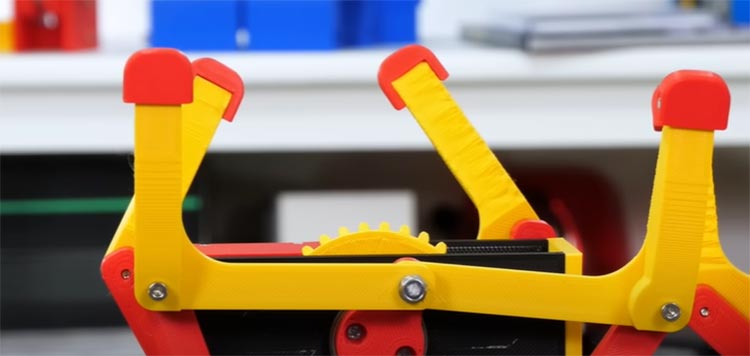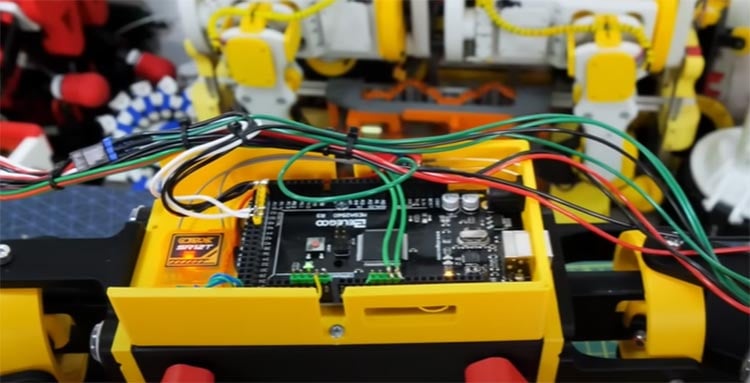
A new centipede robot has been developed with an innovative walking mechanism that has received attention for its unique approach to locomotion. The robot has been designed like a centipede robot that can move with an unusual walking mechanism. The robot was created as a scaled-down prototype for a full-size ridable and the complete video is uploaded on YouTube.
The robot consists of five segments, each containing two pairs of legs. Despite the common belief that centipedes have 100 legs, the robot has 20 individual legs that operate together mechanically. Each segment has a drive shaft that moves its legs through gears and linkages, and universal joints connect the drive shafts between segments.

Powered by a single DC motor and controlled by an Arduino Mega 2560 board, the robot has two servo motors used for steering via elastic cords that pivot the segments. Unfortunately, during testing, the robot's feet tended to slide backward, which led to huge efficiency losses. This setback means that the leg mechanisms need to be redesigned before he can scale up the robot to a full-size rideable version.

The innovative design of this robot has received much attention for its unique approach t`o locomotion. The mechanical setup allows the centipede to move efficiently and smoothly despite its unusual form. All of the mechanical parts were 3D-printed, making it a cost-effective solution that could be replicated by others interested in robotics.
Despite the setback, Bruton-The inventor of the mechanism, remains optimistic about the potential of his design. He plans to continue developing the centipede robot to refine its movement and create a larger, rideable version that can navigate a range of terrains. With its innovative design and cost-effective materials, this centipede robot could revolutionize the field of robotics and pave the way for new discoveries in locomotion.
This project requires knowledge in a lot of domains like 3d printing, electronics, and coding. So, if you are planning to make this robot. You should be well-versed in a few of these concepts. Although James has provided the complete code and cad files, the build is quite tricky

